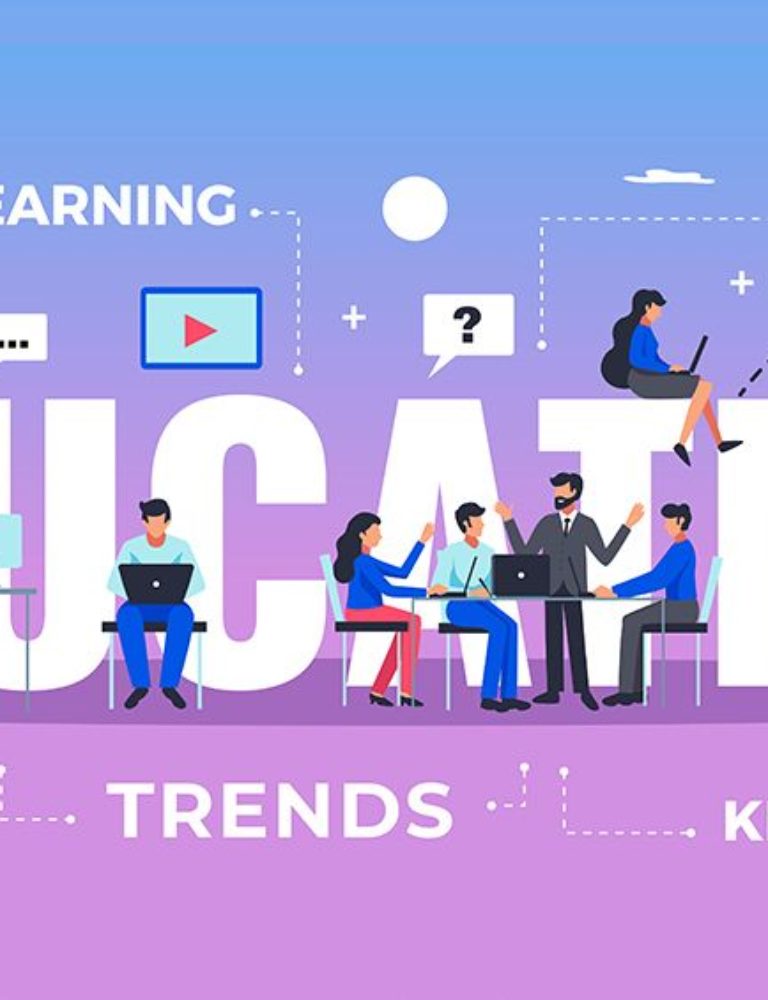The prime attraction for any student while enrolling in an institute is the production and availability of abundant student resources. Educational platforms are one of the highly-valued resources.
However, because of the abundance in the number of these available resources, the educational institutes are in a dilemma about which platform serves the right purpose.
Every platform is well-equipped with multiple features, but the selection of a few should be based on important differentiating factors. You can choose from:
- Educational platforms that offer virtual classrooms and interactive learning techniques
- Channels that help students complete assignments and access learning resources
- Online services that encourage self-paced learning, participation in discussions, assistance in assignment completion, career development services, and preparation for high-end exams
- Webinars and workshops on applications
KITABOO is one of the best digital textbook platforms that helps students stay organized, seek support services, build career portfolios, explore additional courses, deal with various kinds of assessments, and encourage self-paced learning.
Here, we will understand what educational platforms are about, the different types of channels, and how to select the best ones from the lot!
Table of Contents
- Accessible, Flexible, and Trustworthy
- Personalized and Centralized Learning Management
- Assessments and Feedback
- Hybrid Learning
- Involvement of Parents
- Cost-Effective
- Professional Development
Why Do Learners Need Educational Platforms?
Educational platforms provide comprehensive services to students on academics, career-building, and personalized accessibility of study material.
Here are some of the key reasons why educational platforms have gained momentum and why students should include this valuable resource in their journey of acquiring knowledge:
Accessible, Flexible, and Trustworthy
Firstly, educational platforms are accessible through diverse devices. You can modify your learning styles using an online app on your smartphone or install the necessary learning modules from a website on your laptop or tablet.
These platforms are flexible as there is a plethora of content available on these channels. You can trust them with on-demand content, personalized learning and career-development paths, and adaptability to different paces.
Platforms that have a rich collection of content sources, have exceptional user reviews, and promote stringent data security measures can be trusted.
Personalized and Centralized Learning Management
You can choose from a variety of learning sources available on top-notch educational platforms. These channels promote personalized learning by leveraging data analytics, which helps educators understand individual progress, areas of improvement, preferences, and challenges.
Learners have access to adaptive assessments, tailored content, and customizable learning paths.
On the other hand, centralized learning management ensures unified access to key resources, pedagogical content, and communication tools. The objective is to streamline the educational experience for learners and educators while providing individual support as well.
Assessments and Feedback
Educational platforms streamline the assessment process, allowing for the creation, distribution, and grading of assignments and assessments. The content includes diverse question formats, automated grading systems, and real-time feedback. Interactive content, like trivia, quizzes, and gamified learning, is easily available on educational platforms.
They also provide timely feedback to students, enhancing the learning experience. Such instant feedback mechanisms are based on detailed performance analytics and promote continuous and constructive improvement for learners.
Hybrid Learning
The best educational platforms in the market offer a blend of in-person and online resources. The availability of vast content enables flexibility in learners and study schedules.
Techniques like webinars, video conferencing, discussion forums, online communities, and other collaborative and interactive tools help to bridge the gap between digital and physical learning environments.
Involvement of Parents
Online educational channels are generally transparent, especially when communicating with different stakeholders. These platforms provide regular progress updates and facilitate active engagement with parents so that they are aware of their child’s learning.
The best platforms offer parent-teacher communication tools, notifications, and parent dashboards that give them a fair idea of the educational journey of their children.
Cost-Effective
We all are well aware of the rising costs of physical resources. Educational platforms, on the contrary, offer open-access textbooks, eBooks, nominal subscription models for educational content, and other digital materials for both educators and learners.
Despite the cost of learning materials, other overheads like transportation costs, tuition fees, and purchasing study materials are also mitigated.
Professional Development
The educational journey at educational platforms does not stop at educational content. Such channels promote professional development through webinars, key resources, and additional courses that can help learners climb the ladder of professional success.
There are various certification programs and collaborative curricula that contribute to skill development or help students clear competitive exams.
How to Select the Best Educational Platform
Here are some key considerations that will help you select the best resource:
User-Friendly Interface
You must smartly make rigorous comparisons of various educational platforms, before settling for one. Look for channels that have an intuitive design, logical layout, and a clear course structure. The educational content must include accessible modules, resources, and lessons.
Ensure that the platform is responsive and has a mobile-friendly interface. You can ask for a free demo class to understand the interface and assess its user-friendliness. Also, make sure that the platform has a resource center, FAQ section, and a customer service helpdesk.
User Reviews
After you identify several educational platforms, choose the one that aligns best with your personalized goals and interests. Look for consolidated user reviews online and go through individual experiences to understand the specific strengths and weaknesses of the platform.
Identify patterns in feedback and pay attention to the most recent comments. You can also explore forums or social media networks to get valuable insights into the performance of such platforms.
Hybrid Learning
The educational platform you choose should be compatible with a hybrid learning mode that allows seamless integration of online and offline components.
Look for features like virtual classrooms, video tools, content accessibility, access to synchronous and asynchronous content, discussion forums, and other collaborative tools.
Cloud Hosted Platform
A cloud-based educational platform offers scalability, accessibility, and smooth collaborative features. First, you can access the channel on any device at any time. Secondly, a cloud-based platform accommodates various users and data loads at a point in time.
Next, these channels promote group projects and other interactive collaborations among educators and learners. Finally, these services encourage strong security measures, protection of sensitive student data, and an encrypted and secure authentication process.
This ensures compliance with data protection regulations.
Interactive Learning Elements
Go for an educational platform that offers engaging content formats like videos, polls, hands-on assignments, simulations, quizzes, and presentations. Such content encourages active participation and student engagement.
Besides interactive features, these platforms should have unique discussion forums, virtual labs, gamification elements, adaptive learning paths, feedback mechanisms, and real-time collaboration tools.
Assessment Tools and Analytics
There are several assessment formats available in the online and offline educational world. You must ensure that the educational platform that you choose should be equipped with various assessment formats like essays, case studies, quizzes, multiple-choice questions, real-world questions, and practical assessments.
It should have robust performance analytics and a real-time feedback mechanism. Integration with the Learning Management System (LMS) allows for a cohesive educational experience. Such features are important for institutions with a varying number of learners.
Conclusion
Educational platforms have revolutionized learning and given shape to personalized and professional experiences. These channels enable a seamless blend of traditional and contemporary educational methods, promoting an inclusive and cost-competitive education.
With key features and exceptional contributions to the modern learning environment, educational platforms play a pivotal role in shaping the future of learners and educators, making learning more dynamic and accessible!
KITABOO is one such digital textbook platform that helps educational institutes create, publish, and deliver mobile-first interactive content online. It is the perfect study partner for learners and educators.
To know more, write to us at KITABOO@hurix.com.
Connect with us to start a conversation.
Discover How An Ebook Conversion, Publishing & Distribution Platform Can Help You
Kitaboo is a cloud-based content platform to create-publish & securely distribute interactive mobile-ready ebooks.
You May Also Like








